April 17-22, 2016
EGU General Assembly, Vienna, Austria
Abstract
Channelisation measures taken halfway the 20th century have had destructive consequences for the diversity of the ecology in the majority of the lowland streams in countries such as the Netherlands. Currently, stream restoration measures are being implemented in these degraded lowland streams, where design principles are often based on outdated relationships between biological and physical conditions. Little is known about the reference conditions in these streams. Therefore, the aim of this research is to quantify the relationships between biological and physical conditions of macroinvertebrates in reference lowland streams. The research was conducted in four near-natural lowland streams in Central Poland. Field data were obtained during a field campaign in 2011. The following data were obtained in a 50-m reach in each of the four streams: macroinvertebrate sampling, spatial habitat patterns, bathymetry, and flow-velocity. Furthermore, water level, light sensitivity and temperature sensors were installed to obtain the temporal dynamic of these streams. Macroinvertebrates were sampled in 9 different habitat types, i.e. sand, gravel, fine organic matter, stones, branches, leaves, silt, vegetation, and wood. Macroinvertebrates were determined to the highest taxonomic level possible. Data from the bathymetrical surveys were interpolated on a grid and bathymetrical metrics were determined. Flow velocity measurements were related to habitats and flow velocity metrics were determined. Analysis of the data shows that flow conditions vary among the different habitat, with a gradient from hard substrates towards soft substrates. Furthermore, the data show that stream as a unit best explains species composition, but also specific habitat conditions, such as substrate type and flow velocity, correlate with species composition. More specific, the data shows a strong effect of wood on species composition. These findings may have implications for stream restoration design, which mainly focus on large-scale reconstruction of channel planform, whereas this study shows that improvement of stream ecology should focus on the smaller habitat scale.
×
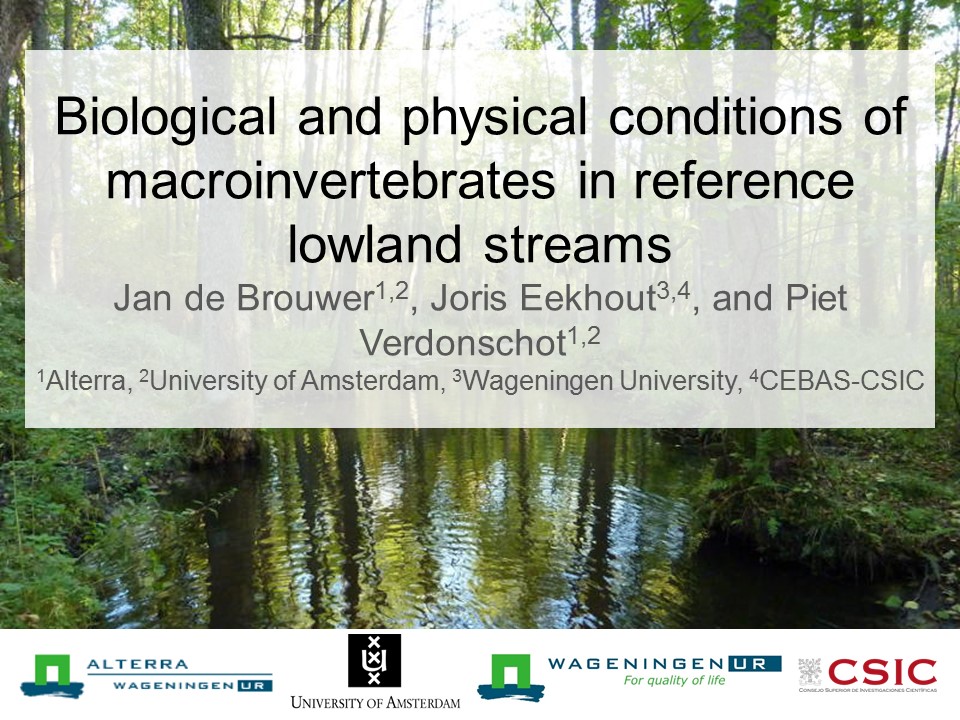
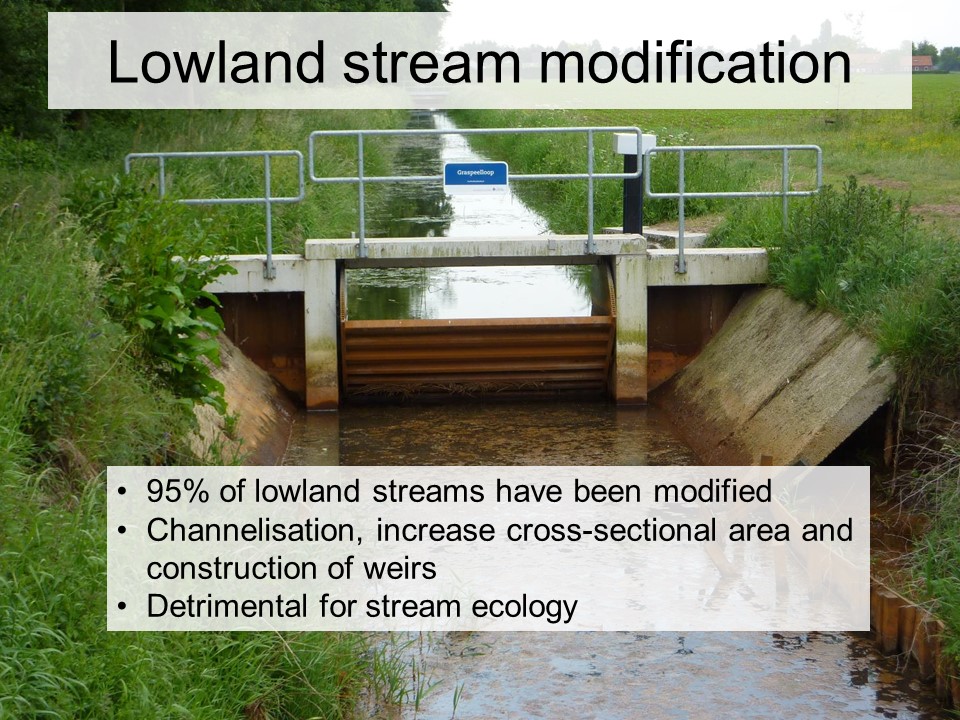
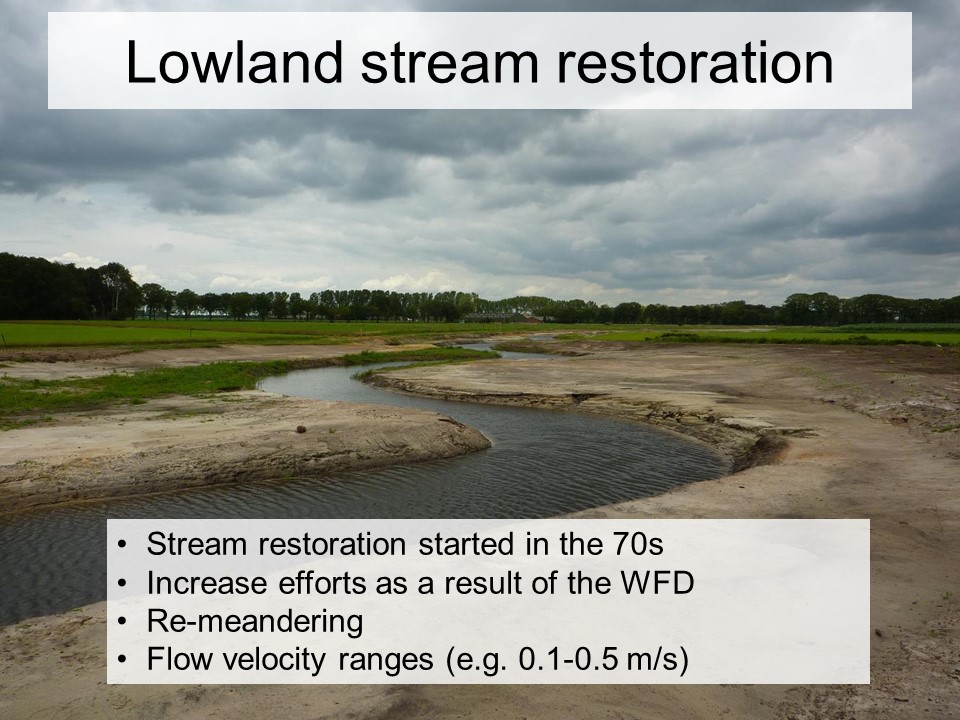
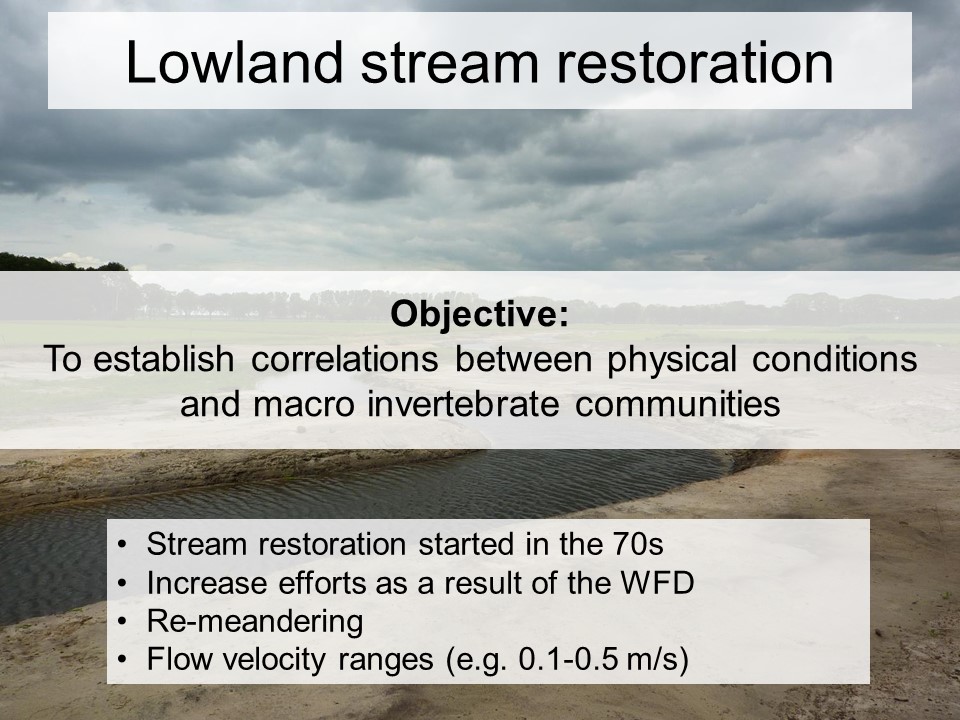
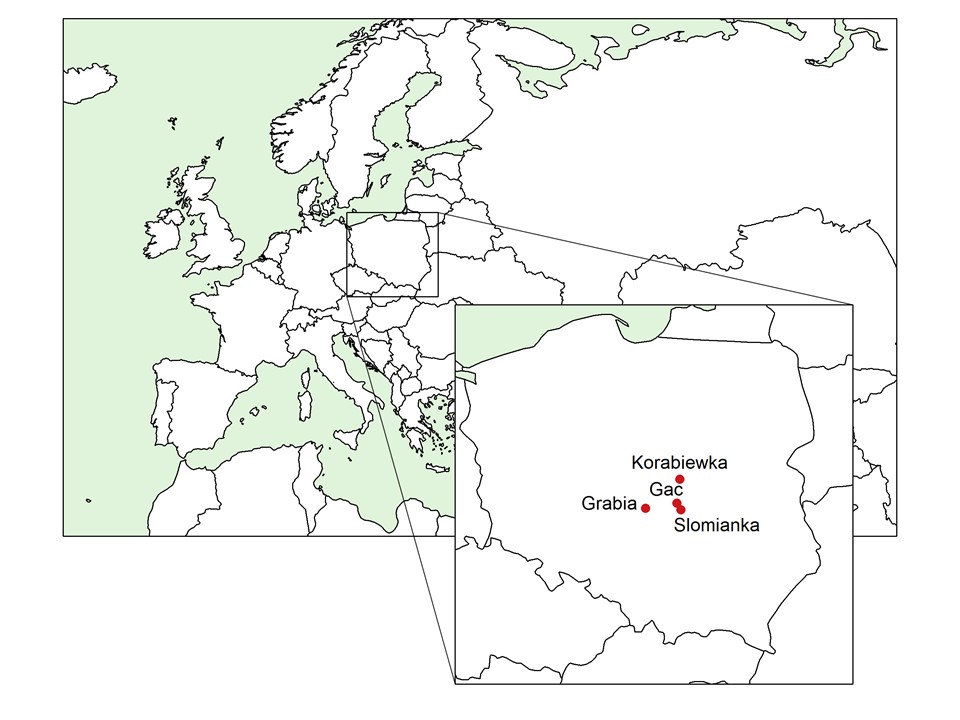
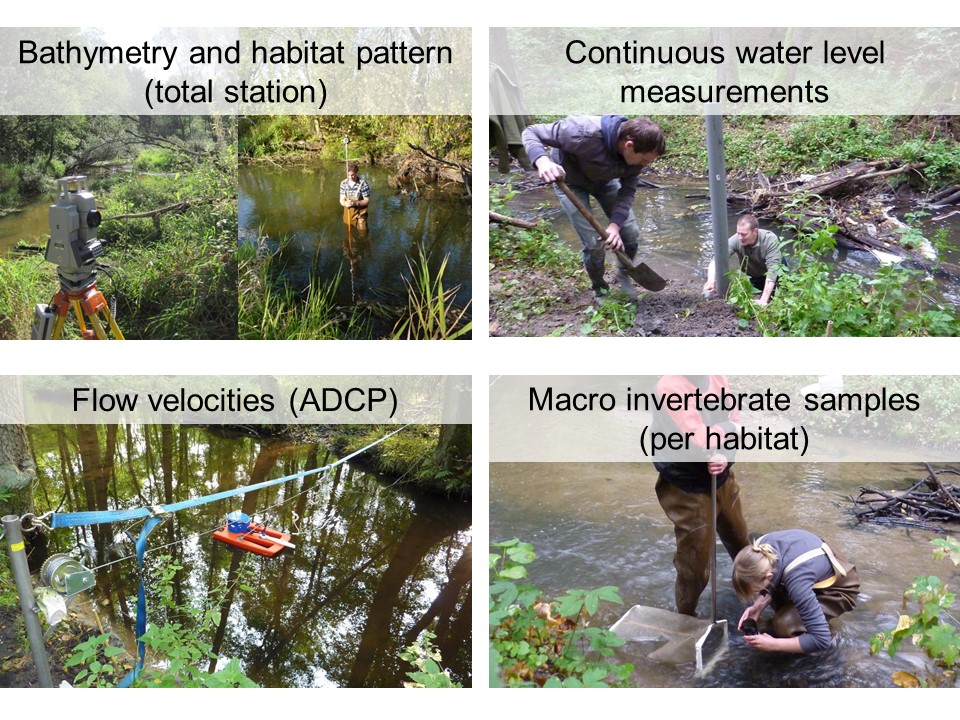
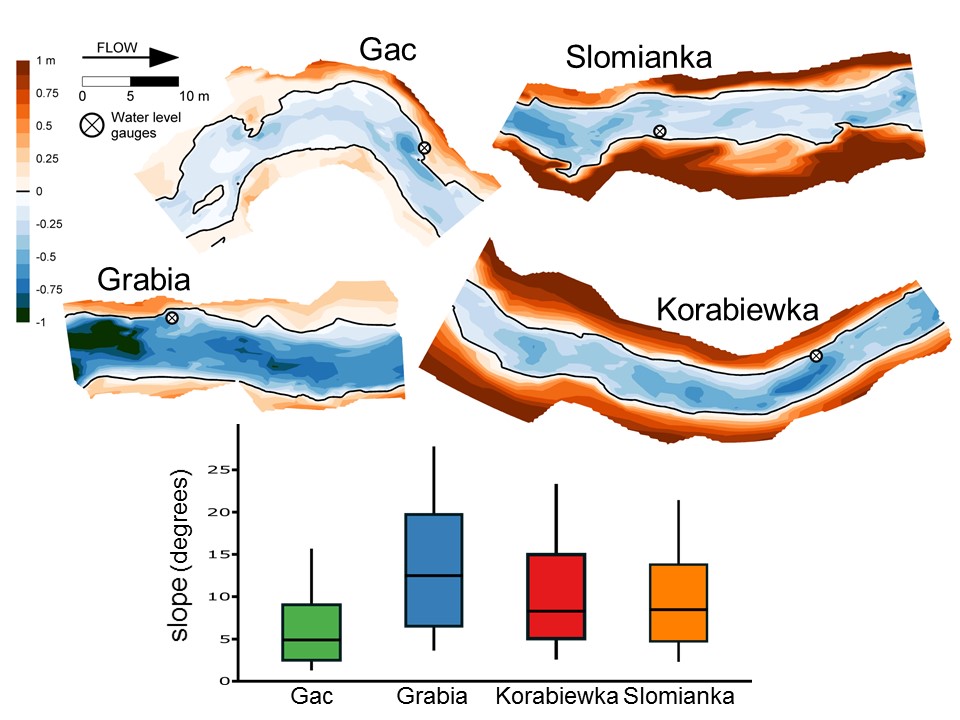
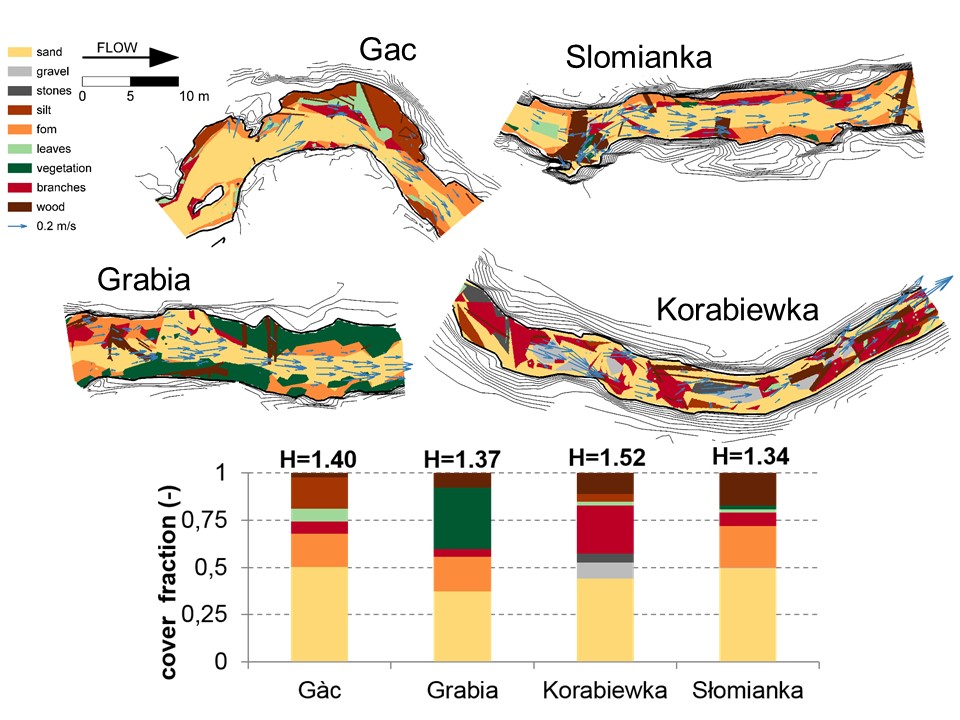
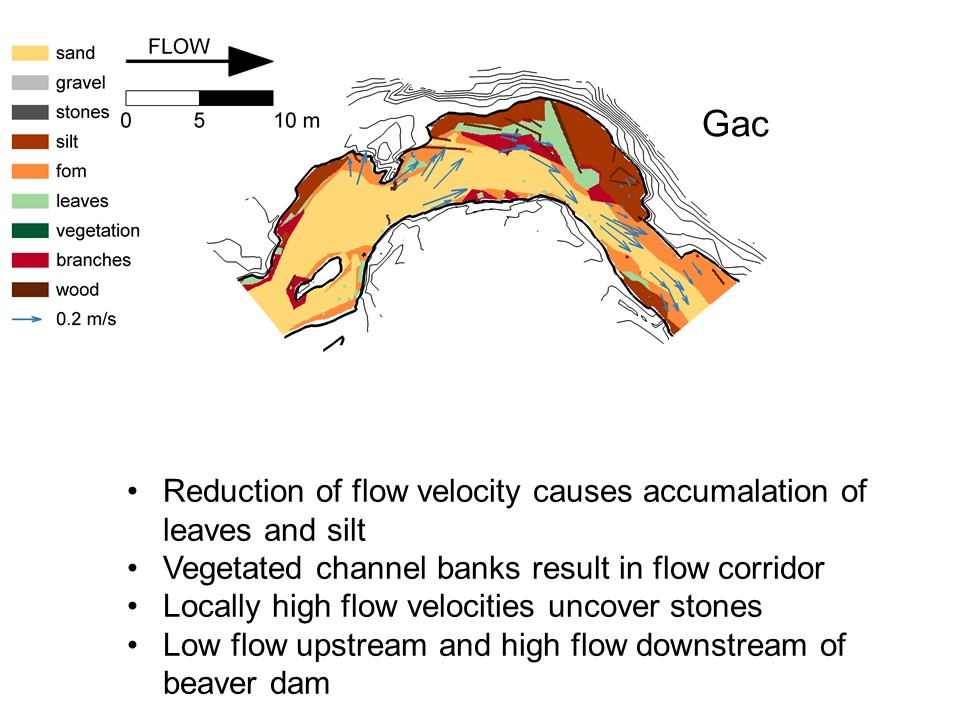









1/18
Here we presented the results of a field campaign we performed in 4 Polish streams to characterize their physical conditions
2/18
Around 95% of all lowland streams in the Netherlands have been modified in the first part of the 20th century, mainly through channelisation, increase of cross-sectional area and construction of weirs. These measures were detrimental for stream ecology, because of the increase in flow variation and siltation
3/18
In the seventies of the 20th century water authorities started to restore the modified lowland streams in the Netherlands, mainly by constructing meandering channels. The design principles are often based on flow velocity ranges, however this may not the only relevant physical condition for stream ecology
4/18
This presentation focusses on several physical conditions with the aim to establish a link between these physical conditions and stream ecology
5/18
We performed an extensive field campaign in 4 undisturbed lowland streams, located in central Poland near the city of Lodz. In each stream we selected a 50 m stream reach where we performed the measurements
6/18
We measured the bathymetry and habitat pattern with a total station, flow velocities with an ADCP and collected macro invertebrate samples in each of the habitat types. We also installed pressure sensors to obtain a time series of the water level in each stream
7/18
This figure shows the interpolated bathymetry of each stream, we measured the bathymetry such that we were able to obtain a detailed Digital Elevation Model of each stream. The blue colors indicitate the water depth at the time of measurement. the Grabia is relatively deep and the Gac relatively shallow
8/18
This figure shows the habitat pattern in each stream. A total of 9 different habitat types were recorded during the field campaign. We determined the Shannon diversity index for each stream, which shows an higher diversity in the Korabiewka and a lower in the Slomianka, although the differences are not big
9/18
From the figure some processes related to flow velocity may be obtained. In the Gac silt and leaves accumalated in the outer bank of this bend, this is most likely caused by the obstruction of the flow by this tree which causes a reduction of the flow velocity
10/18
The Grabia is the only stream which is not located in a forest, the Grabia has vegetated banks which causes a flow corridor with high flow velocities
11/18
The Korabiewka is the only stream where we found stones, this may be caused by locally high flow velocities which causes fine substratum, such as silt and sand to be washed away
12/18
And finally in the Slomianka we found a beaver dam, the dam causes flow velocities to decrease upstream and increase downstream
13/18
These are some examples of macro invertebrates. From each of the measurements we have taken we were able to determine several metrics or derivatives, which we related to the macro invertebrate communities through a multivariate statistical technique, called Canonical Correspondence Analysis (CCA)
14/18
A CCA is able to give the most significant variables that explain the variation in macro invertebrate samples. The figure shows the two main axes, which explain 77% of the variance of the data. Each dot is a sample and includes data from the macro invertebrate sample and all connected physical variables
15/18
The most significant explanatory variables are the streams themselves, the colors of the dots represent the 4 different streams and show that they form recognizable cluster. The other arrows represent some other significant variables
16/18
When I change the colors again, the colors show the different habitat types. Now some other clusters appear and shows that wood, sand and branches/COM are significant habitat types. Also other physical variables are significant as well, such as flow velocity, standard deviation of flow velocity and habitat size
17/18
Our analysis shows that streams are the most significant variables to describe the macro invertebrate communities. Although other variables such as flow velocity and habitat are also significant. These results justify current efforts to place large woody debris in streams to increase habitat diversity
18/18
Thanks you for your attention